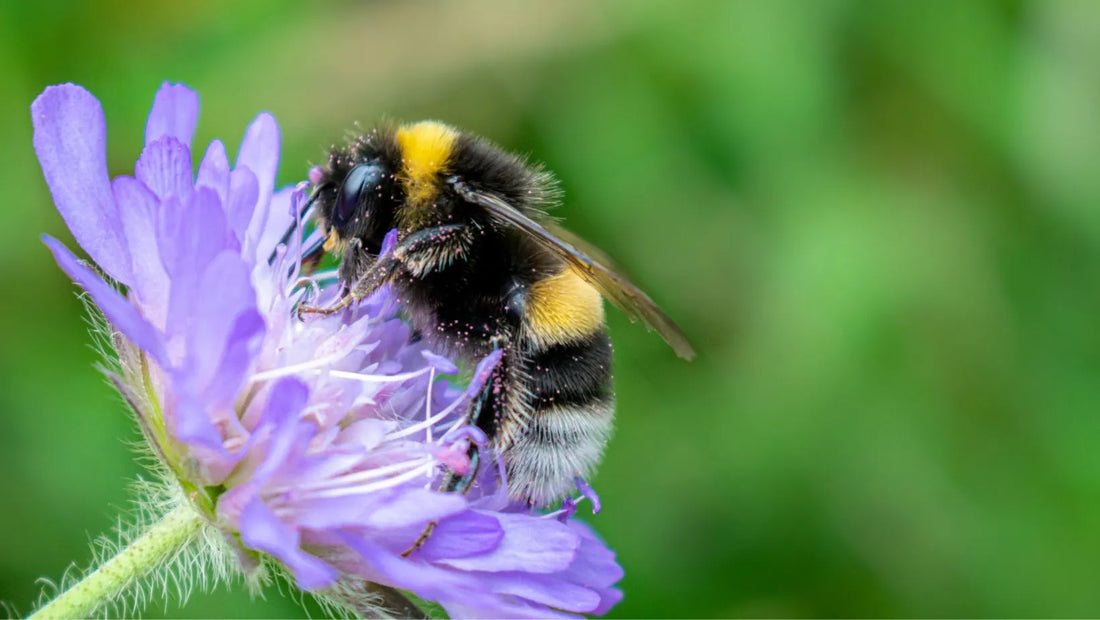Have you ever mis-identified a bee? ...me too!
Here at Beevive we are always fascinated learning about the ways in which insects adapt and evolve to survive in the tough world out there. Interestingly, we have found that there are many insects which imitate the bee family to warn off predators!
This technique of adaptation is called Batesian Mimicry, named after its discoverer, the 19th century English naturalist H.W. Bates.
It is a form of 'biological resemblance in which a noxious or dangerous organism, equipped with a warning system such as conspicuous coloration is mimicked by a harmless organism'(1). This technique is a form of protection for the insect, when predators mistake it for something more dangerous and leave it be. Insects will mimic bees or wasps, due to their sting and unpleasant taste, which usually fend off any potential predators. Although many of these insects are wannabees in disguise, go easy on them because like bees they're often expert pollinators too!
After having a deep dive on the internet and into books, these are the insects that I have found that mimic different species of bees.
 Hoverflies (Syrphidae)
Hoverflies (Syrphidae)
Hoverflies (Syrphidae)
The most common bee look alikes are hoverflies. They may look like bees but are in fact harmless and cannot sting. There are many different species of hoverfly in the UK which vary in characteristics, with some resembling solitary bees or honeybees. There is also a hairy species of hoverfly that resembles a bumblebee. It can be easy to confuse hoverflies with bees at first glance, but here are some simple ways of telling them apart.
(2) As Friendsoftheearth.uk describe, hoverfly characteristics are;
- 1 pair of wings (bees have 2)
- No narrow waist
- Short antennae
- Eyes that cover most of their head (sometimes meeting in the middle)
- No biting mouthparts (mandibles)
- Hover in mid-air
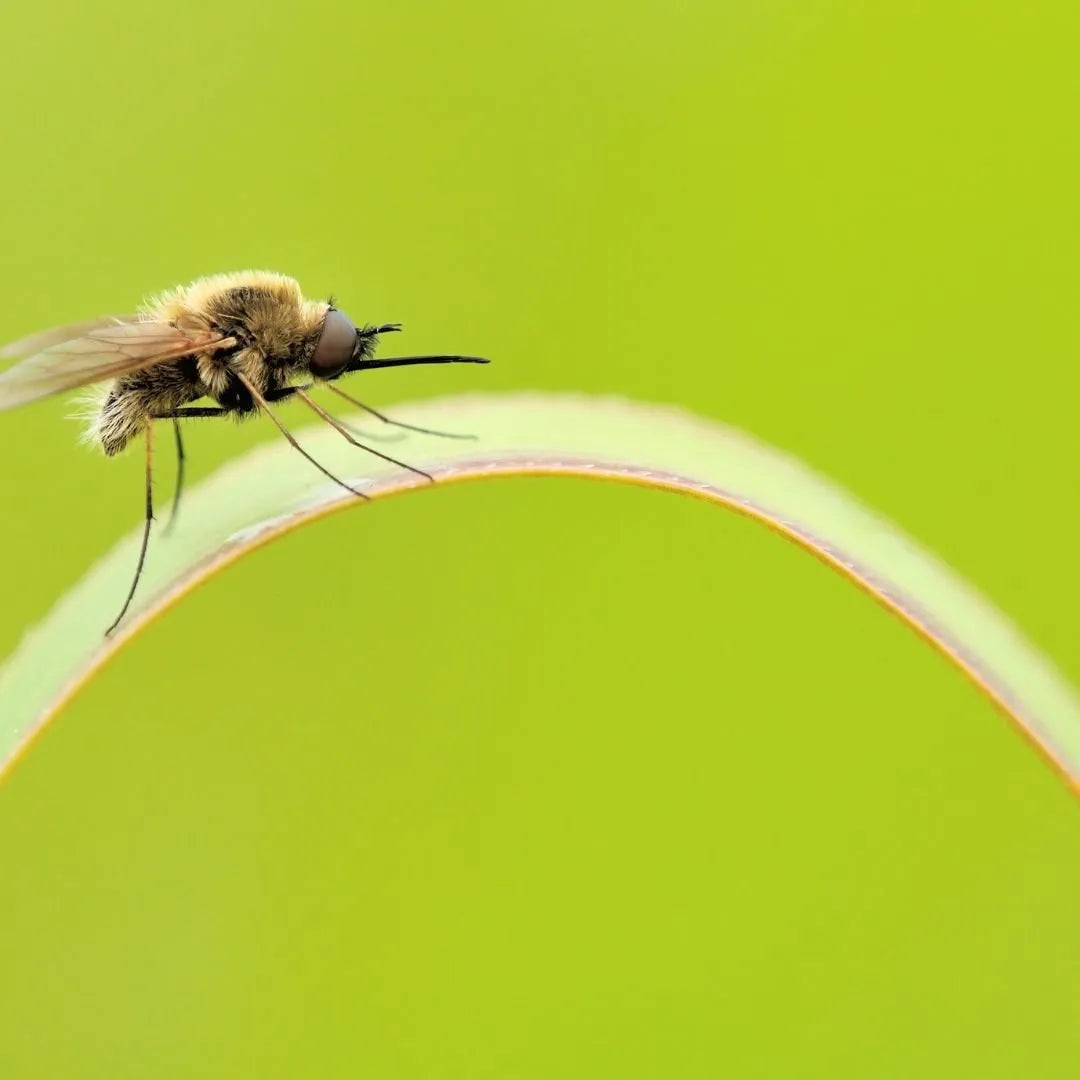 Bee-flies (Bombylius)
Bee-flies (Bombylius)
Bee-flies (Bombylius)
Another fly playing dress up as a bee are these fuzzy brown flies, that mimic the characteristics of the brown carder bumblebee and male hairy-footed flower bees. Not only do they look similar but they even feed on the same flowers. You can't miss their long proboscis (tongue) due to it being permanently stretched out, in comparison to bees who tuck theirs in when not feeding.
(2) As Friendsoftheearth.uk describe, bee-fly characteristics are;
- Long tongue always outstretched
- Single pair of wings - never folded
- Short antennae
- No narrow waist
- Very long, thin legs
- No biting mouthparts (mandibles)
- Eyes that cover most of their head (sometimes meeting in the middle)
- Often hover in mid-air
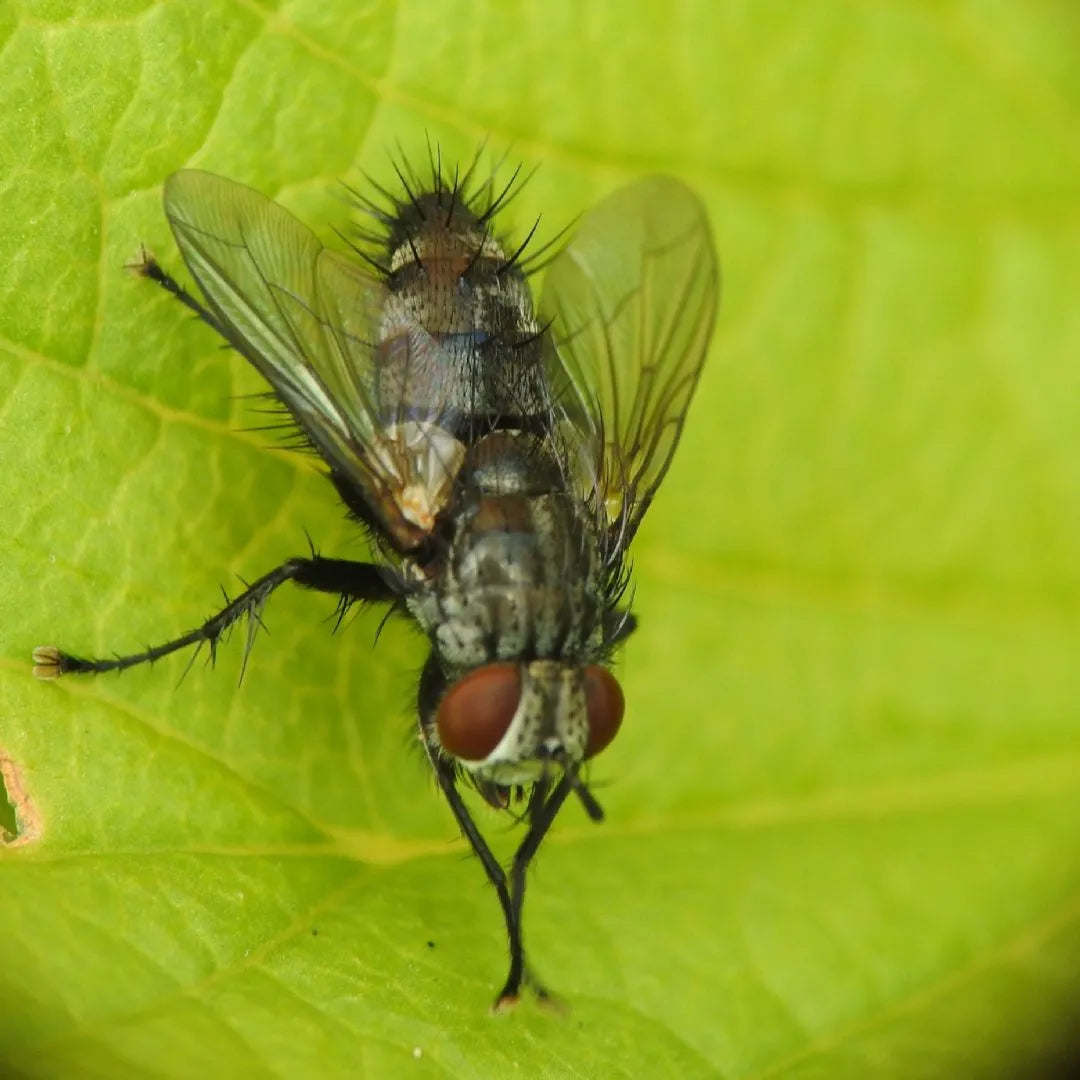 Parasitic flies (Tachinidae)
Parasitic flies (Tachinidae)
Parasitic flies (Tachinidae)
A third fly very easily mistaken for mimicking our round hairy bumblebees is the parasitic fly. Characteristics vary across multiple species. For example, the Tachina grossa is one of Britain's largest flies and mimics the black bumblebee, whereas the yellow-sided Tachina Fera mimic the colours and shape of the Wool Carder Bee.
(2) As Friendsoftheearth.uk describe, parasitic fly characteristics are:
- Most are bristly rather than hairy
- Single pair of wings- never folded
- Short antennae
- No narrow waist
- Bulbous head
- Eyes cover most of head
- No biting mouthparts (mandibles)
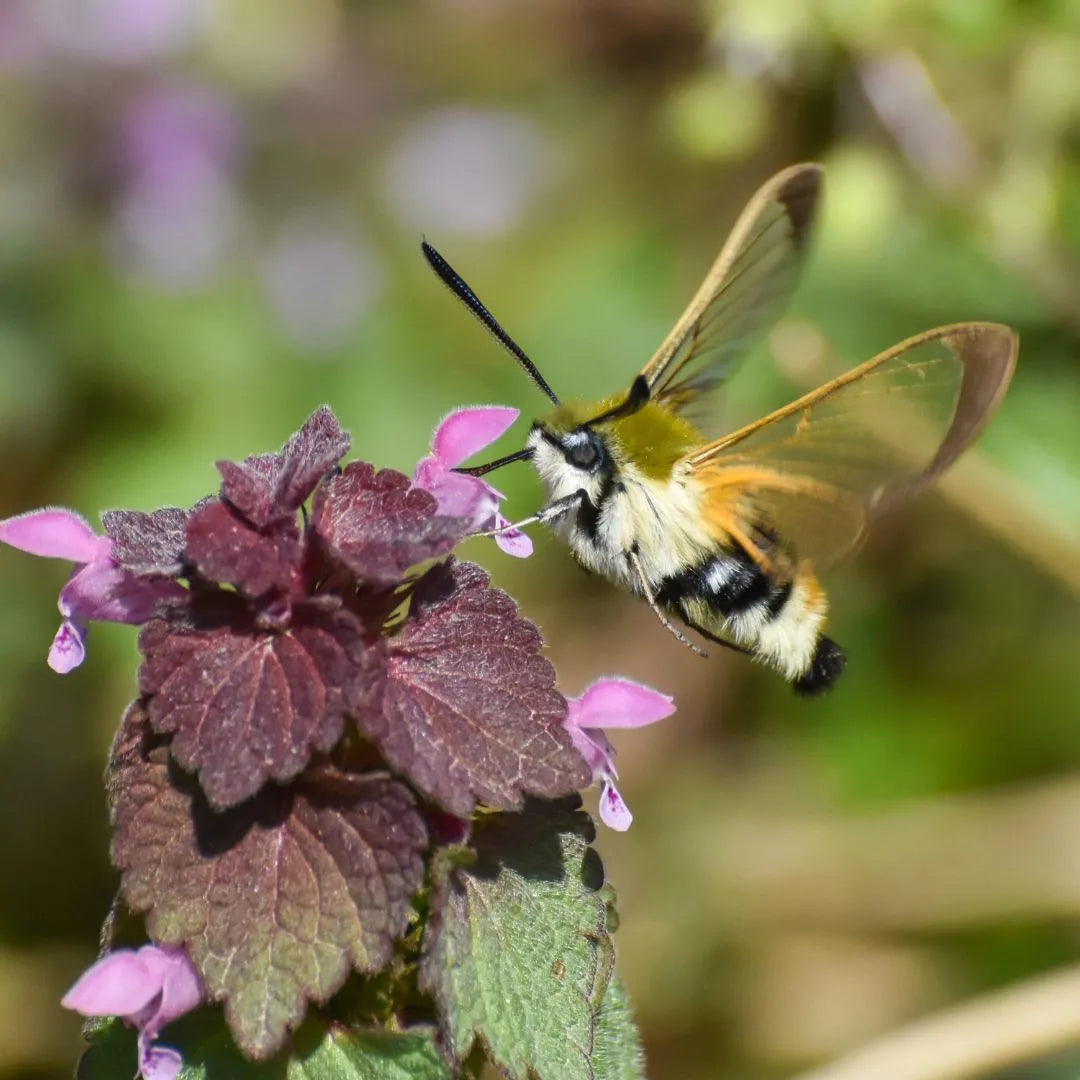 Broad-bordered bee hawk-moth (Hemaris fuciformis)
Broad-bordered bee hawk-moth (Hemaris fuciformis)
Broad-bordered bee hawk-moth (Hemaris fuciformis)
Mainly found in Southern and Central England. It is a relatively scarce species, so if you do happen to come across this Moth, cherish it! This moth is named after its resemblance to a bumblebee because of it's stripe. However, it is far more agile and much larger than our common bumblebee, so can be identified by their size.
(3) As The Wildlife Trusts describe, broad-bordered bee hawk-moth characteristics are;
- Reddish brown bands across its golden abdomen (can change to black as the hairs wear off)
- Reddish bands on its translucent wings
- Long clubbed antennae
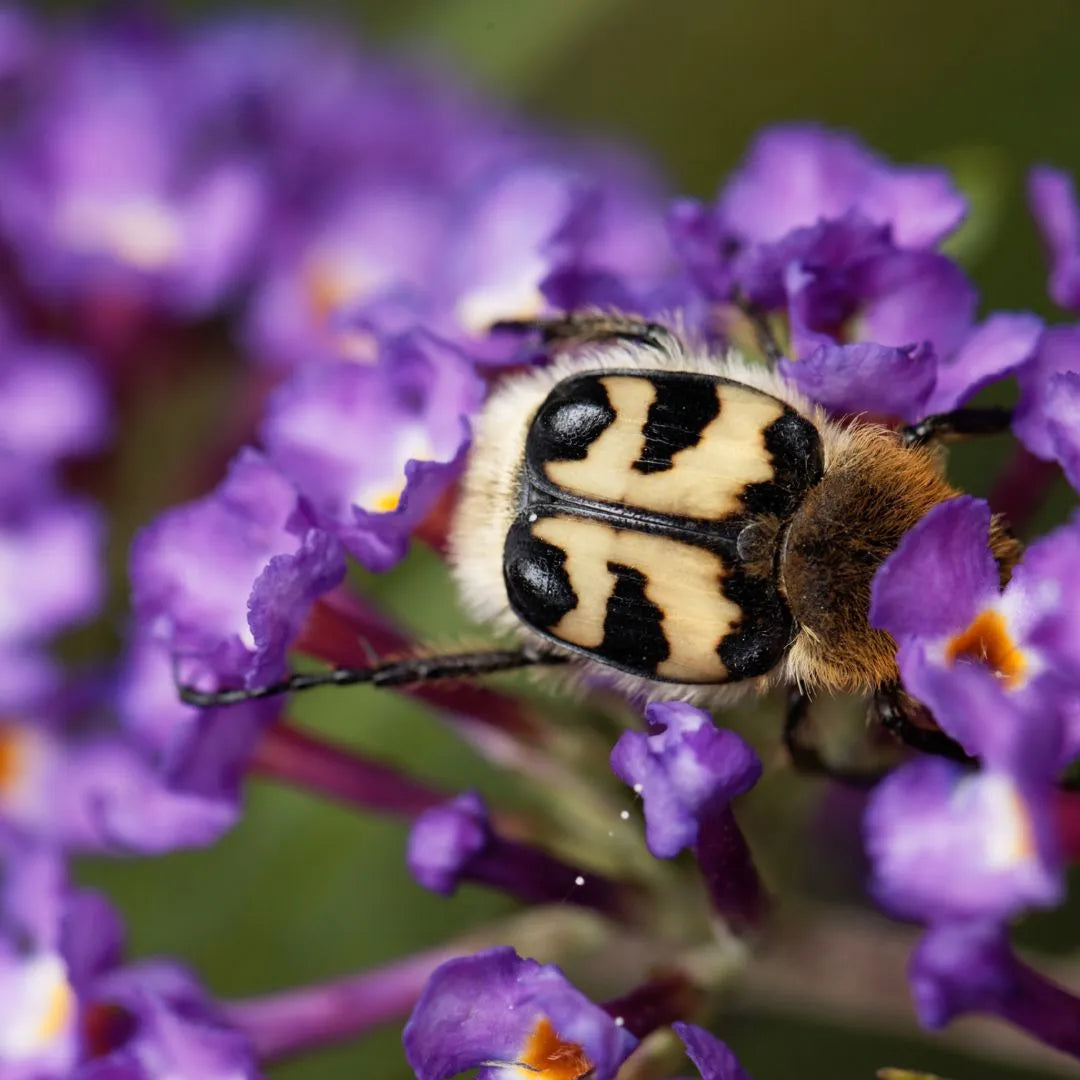 Broad-bordered bee hawk-moth (Hemaris fuciformis)
Broad-bordered bee hawk-moth (Hemaris fuciformis)
Bee beetle (Trichius fasciatus)
This unique bee beetle is very scarce in Britain, so make sure to appreciate its beauty if you ever stumble across one. Though its disguise is less convincing and more like a beetle in a bee costume, it's interesting that even beetles are attempting to mimic the bee family to keep predators at bay.
You won't have seen this one coming...
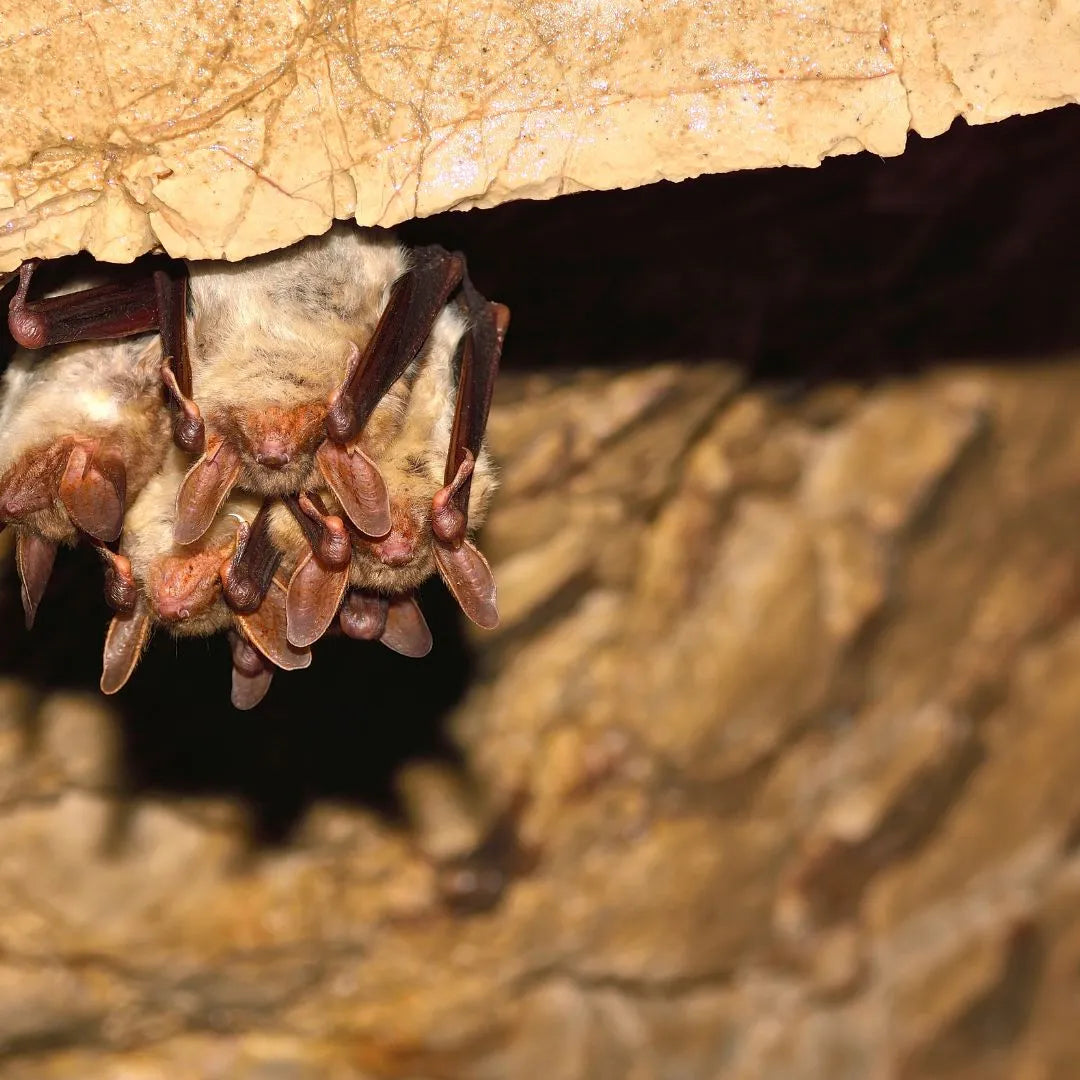 Mouse-eared bats
Mouse-eared bats
Mouse-eared bats
There has even been an instance of mammals taking on this form of Batesian mimicry!
In a recent study, scientists have documented a species of European bat that buzzes like a hornet. Whilst studying the great mouse-eared bats researcher noticed something strange - the bats were buzzing like a hornet or swarm of bees. As with most of our previous mimickers, they were doing so to ward off potential predators; scientists theorised that these bats were doing the same thing.
To test the idea, the scientists played a series of different recordings (a non-buzzing sound and a buzzing sound of bees, hornets and bats) over a speaker to barn owls and tawny owls; two potential bat predators.
When the owls heard the non-buzzing sound they moved closer, which could suggest they were intrigued by the potential for food. However, when they played the buzzing sounds many of the owls moved away from the speaker. The results show a strong pattern for the 'first documented example of mimicry between animals and insects'(4,5), in which they noted is one of the very few examples of an animal mimicking another animal's sound. Cool huh?
I hoped you've enjoyed learning about these bee look (and sound) a likes and have fun identifying them too!
Emily Moore-Watts
References:
- https://www.britannica.com/science/Batesian-mimicry
- Bee mimics - insects that look like bees but are not | Friends of the Earth
- Broad-bordered bee hawk-moth | The Wildlife Trusts
- https://www.independent.co.uk/climate-change/news/bats-bees-mimic-predators-b2075104.html
- https://www.cell.com/current-biology/fulltext/S0960-9822(22)00486-9#relatedArticles
- https://www.eurekalert.org/news-releases/951564


